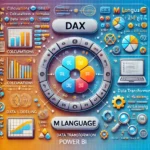Agile vs. Kanban have emerged as two powerful methodologies, each with its own set of principles and practices. Both methodologies prioritize efficiency, continuous improvement, and delivering value to customers. However, they have distinct approaches and are best suited for different types of projects. In this blog post, we will explore the nuances of Agile and Kanban, understanding their characteristics, advantages, and use cases, to help you make an informed decision when choosing the most suitable methodology for your projects.
Agile Methodology: Embracing Flexibility and Collaboration
Agile is an iterative and incremental approach that values customer collaboration, adaptability, and continuous improvement. It encourages self-organizing teams to work in short iterations called “sprints,” where each sprint results in a potentially shippable increment of work. Agile emphasizes responding to change and delivering valuable software frequently.
Key Principles of Agile (from the Agile Manifesto)
- Individuals and interactions over processes and tools
- Working software over comprehensive documentation
- Customer collaboration over contract negotiation
- Responding to change over following a plan
Use Cases for Agile
- Projects with evolving requirements and a need for frequent customer feedback.
- Collaborative environments that foster teamwork and continuous improvement.
- Development teams seeking flexibility in adapting to changing priorities.
https://synapsefabric.com/2023/07/22/agile-vs-devops-unraveling-the-differences-for-modern-software-development/
Advantages of Agile
- Improved customer satisfaction through frequent iterations and customer involvement.
- Flexibility to accommodate changing requirements and priorities.
- Enhanced collaboration and communication among team members.
Kanban: Visualizing Work and Optimizing Flow
Kanban is a visual project management system that emphasizes flow efficiency and continuous delivery. Unlike Agile, Kanban doesn’t prescribe specific iterations or fixed time frames for work. Instead, it focuses on visualizing work items on a Kanban board, allowing teams to monitor the flow of work and identify bottlenecks in the process. Kanban promotes a steady and continuous workflow, maximizing efficiency and minimizing waste.
Key Principles of Kanban
- Visualize workflow on a Kanban board.
- Limit work in progress (WIP) to optimize flow.
- Manage and measure flow efficiency.
- Make process policies explicit and evolve collaboratively.
Use Cases for Kanban
- Projects with a steady and predictable flow of work.
- Situations where the focus is on improving workflow and optimizing processes.
- Service-oriented projects or support teams with a constant influx of tasks.
Advantages of Kanban
- Efficient use of resources by limiting work in progress.
- Continuous delivery of work items without strict iterations.
- Easy to adapt to changing priorities and workload.
Agile vs. Kanban: The Key Differences
Time Frames
- Agile: Emphasizes fixed time-boxed iterations (sprints).
- Kanban: Works on a continuous flow of work with no fixed time frames.
Flexibility
- Agile: Highly adaptable to changing requirements.
- Kanban: Offers flexibility to respond to shifting priorities without the constraints of iterations.
Workflow Visualization
- Agile: Uses burndown charts and sprint backlogs for visualization.
- Kanban: Utilizes Kanban boards to visualize work items and their progress.
Choosing between Agile and Kanban depends on the nature of your projects, team dynamics, and the level of predictability required. Agile is ideal for projects with evolving requirements and a need for frequent customer feedback, while Kanban is more suitable for steady and predictable workflows where visualizing work items and optimizing flow efficiency are paramount.
By understanding the principles and practices of Agile and Kanban, you can make an informed decision and adopt the methodology that best aligns with your project goals and team’s preferences, leading to efficient and successful project management and delivery.






